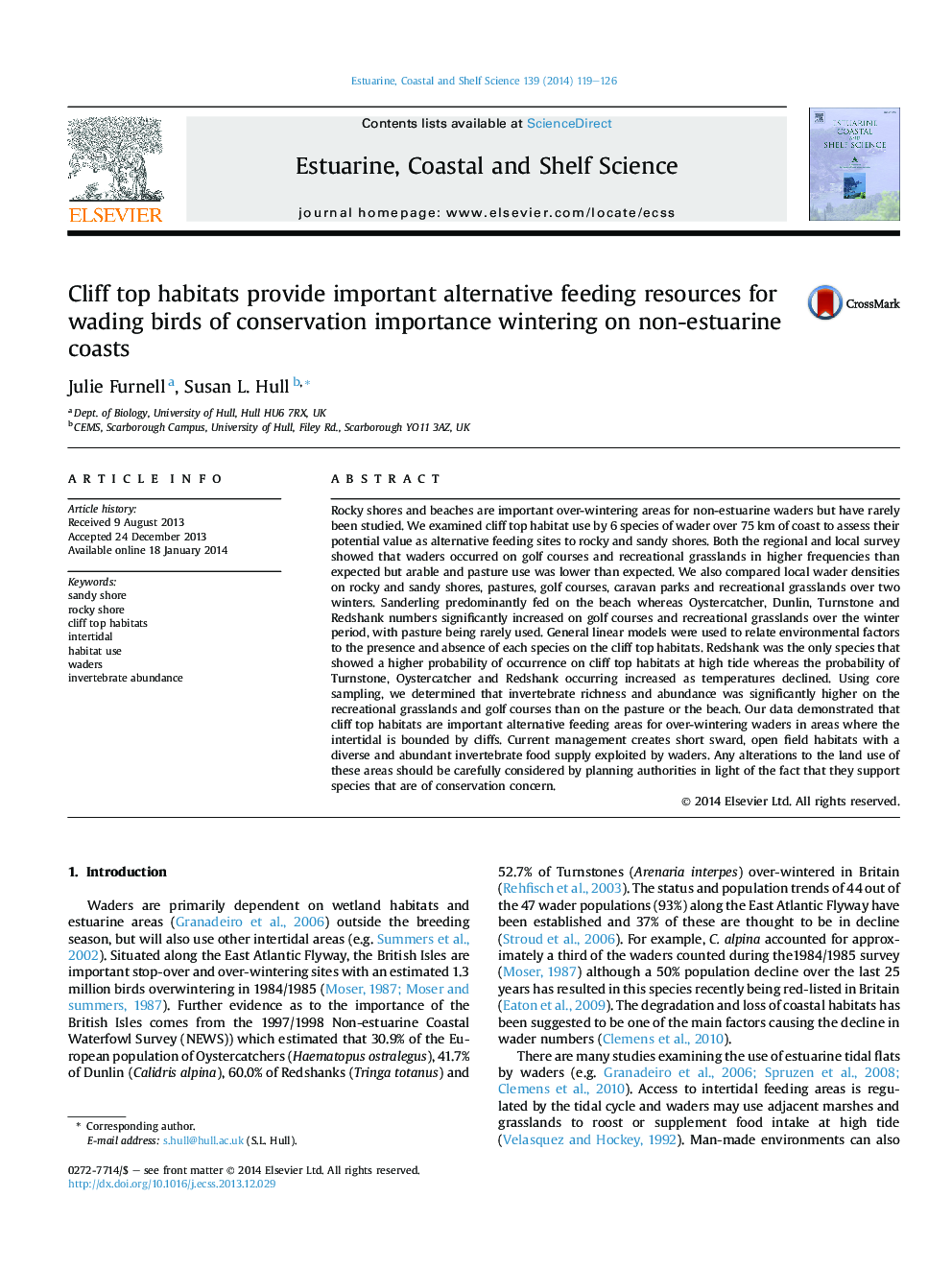| کد مقاله | کد نشریه | سال انتشار | مقاله انگلیسی | نسخه تمام متن |
|---|---|---|---|---|
| 6384974 | 1626657 | 2014 | 8 صفحه PDF | دانلود رایگان |
- Cliff top habitats provided additional feeding areas for over-wintering waders.
- Waders fed primarily on short sward grasslands rather than arable or pasture.
- As temperature decreased, 3 species showed a higher probability of cliff top use.
- Invertebrate abundance was significantly higher on the short sward grasslands.
- Cliff top recreational grasslands are important resources for non-estuarine waders.
Rocky shores and beaches are important over-wintering areas for non-estuarine waders but have rarely been studied. We examined cliff top habitat use by 6 species of wader over 75Â km of coast to assess their potential value as alternative feeding sites to rocky and sandy shores. Both the regional and local survey showed that waders occurred on golf courses and recreational grasslands in higher frequencies than expected but arable and pasture use was lower than expected. We also compared local wader densities on rocky and sandy shores, pastures, golf courses, caravan parks and recreational grasslands over two winters. Sanderling predominantly fed on the beach whereas Oystercatcher, Dunlin, Turnstone and Redshank numbers significantly increased on golf courses and recreational grasslands over the winter period, with pasture being rarely used. General linear models were used to relate environmental factors to the presence and absence of each species on the cliff top habitats. Redshank was the only species that showed a higher probability of occurrence on cliff top habitats at high tide whereas the probability of Turnstone, Oystercatcher and Redshank occurring increased as temperatures declined. Using core sampling, we determined that invertebrate richness and abundance was significantly higher on the recreational grasslands and golf courses than on the pasture or the beach. Our data demonstrated that cliff top habitats are important alternative feeding areas for over-wintering waders in areas where the intertidal is bounded by cliffs. Current management creates short sward, open field habitats with a diverse and abundant invertebrate food supply exploited by waders. Any alterations to the land use of these areas should be carefully considered by planning authorities in light of the fact that they support species that are of conservation concern.
Journal: Estuarine, Coastal and Shelf Science - Volume 139, 20 February 2014, Pages 119-126
